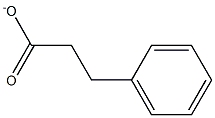514814-49-4
 514814-49-4 結(jié)構(gòu)式
514814-49-4 結(jié)構(gòu)式
基本信息
PMX 205
HYDROCINNAMATE
N2-(1-氧代-3-苯基丙基)-L-鳥氨酰-L-脯氨酰-3-環(huán)己基-D-丙氨酰-L-色氨酰-L-精氨酸,(5→1)-內(nèi)酰胺
Hydrocinnamate
deamino-Phe-Orn(1)-Pro-D-Cha-Trp-Arg-(1)
L-Arginine, N2-(1-oxo-3-phenylpropyl)-L-ornithyl-L-prolyl-3-cyclohexyl-D-alanyl-L-tryptophyl-, (5→1)-lactam
物理化學(xué)性質(zhì)
常見問題列表
C5aR
A complement activation product, C5a, is known to recruit and activate microglia and astrocytes in vitro by activation of a G protein-coupled cell-surface C5aR. In the MTT assay, in 24 h plate, it shows that all groups are significant when compared with negative control group. For PMX 205 (PMX205) group, the value recorded is in between 0.09893 to 0.2465, EP54 group, 0.02724 to 0.1748 and Tamoxifen group, the value recorded in between 0.09880 to 0.2464. For the 48 h plate of incubation time, only two groups show a significant result, which are PMX 205 and Tamoxifen. The values recorded are in between 0.04987 to 0.3273 and 0.5777 to 0.8551 respectively. For the 72 h plate, only one group shows a significant result, PMX 205 (antagonist group) with the value recorded in between 0.02136 to 0.5322.
PMX 205 (PMX205) is an orally active, selective C5aR antagonist. Animals treated with PMX 205 (1 mg/kg/day, oral) displays a significant extension of survival time and a reduction in end-stage motor scores, as compared with vehicle-treated rats. PMX 205-treated animals also display reduced levels of astroglial proliferation in the lumbar spinal cord. SOD1 G93A rats are orally dosed with PMX 205 (1 mg/kg/day) from two time points (days 28 and 70) before the onset of major clinical symptoms. Both treatment groups have a significant extension in survival time compared with untreated rats (p=0.022, day 28; p=0.015, day 70), with no clear differences in outcomes between the two treatment regimens. Tg2576 mice are treated with PMX 205 (PMX205) at 20 μg/mL in the drinking water (n=17) from 12 to 15 mo of age, the time frame at which there is a rapid accumulation of amyloid deposits in these animals. Untreated Tg2576 animals (n=11) are used as controls. After 3 mo, animals treated with PMX 205 show significantly less fibrillar plaque load (thioflavine reactivity) than do untreated animals. In 3×Tg mice, PMX 205 also significantly reduces hyperphosphorylated tau (69%).

